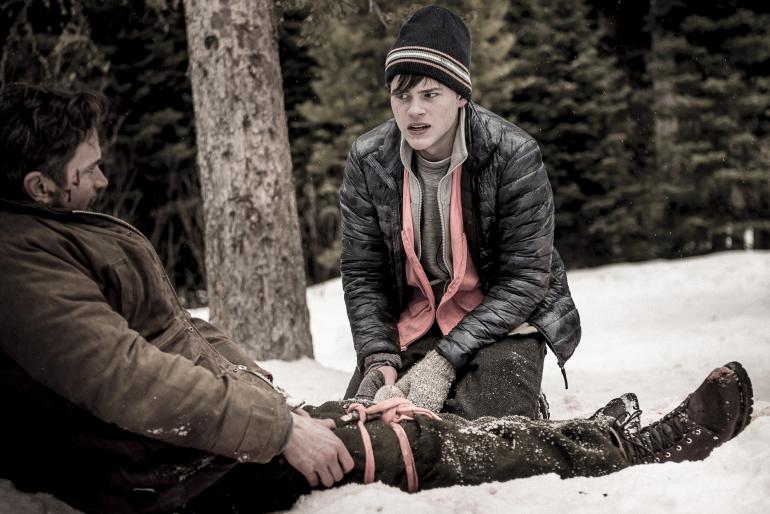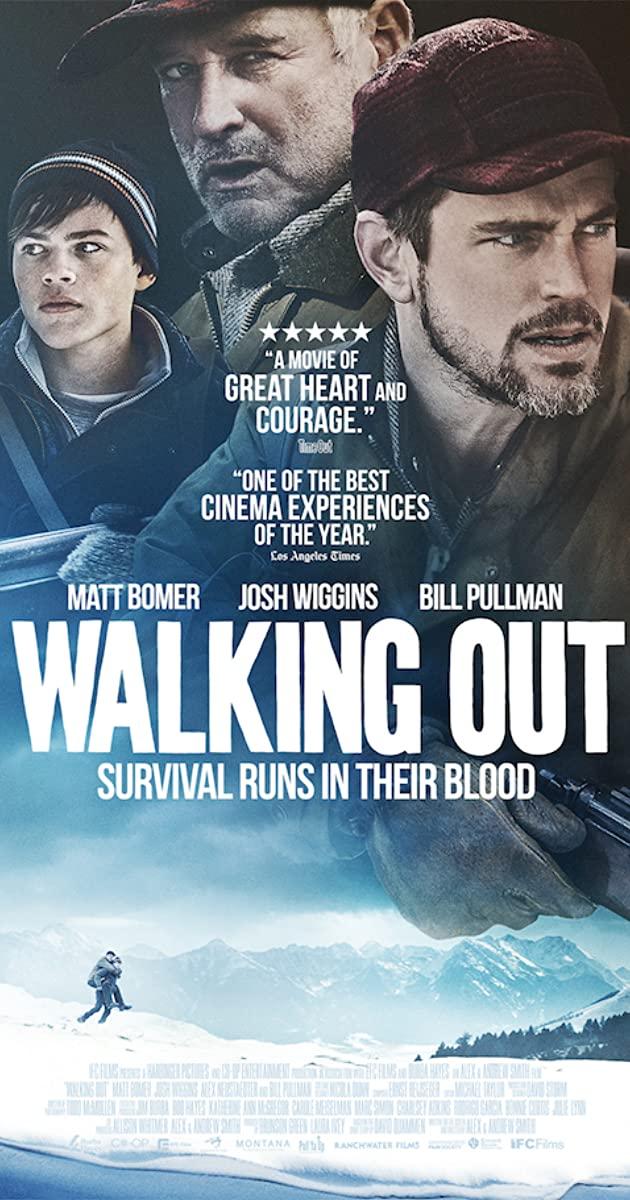
No complete estimate of David Quammen’s writings can be made without the recognition of certain dominating forces always at work behind Quammen’s pen, namely the stubborn, self-aware approach he has brought to all of his creative efforts.
Quammen has forever owned a passion for text. As a young man, he could think about nothing else much; the natural world and writing.
Forty-some years ago, Quammen was a hungry young writer who spent his days and nights as a bartender and bar manager at the Depot in Missoula. About that time, he wrote a short story titled “Walking Out” – the tale of a boy and a father and a hunting trip gone terribly amiss. The boy, who's arrived in rural Montana for his annual visit, is as unfamiliar and alien to the rugged lands as he is to his father. Initially this story was part of a larger novel, which would have been his second, but that novel never established publication.
“It was a time when it was still hard to be published as an author for me,” said Quammen, who now calls Bozeman, MT.,home. “I was starting over and paying my dues and starting over again between book one (published in 1973) and book two (The Soul of Vicktor Trunko, published in 1987), which, in his words, “sank like a hot pistol tossed into the Potomac), and I was working menial jobs as a bartender. I wrote a long, complicated novel and no one wanted it; it was about fathers and sons and it had that storytelling impulse within, and there were stories within the stories of that larger novel. One of them was Walking Out and that story came out of that novel and it became a fresh, standalone story (first published in 1980), and, well, a mere 43 years later, it’s been turned into a movie.”
Quammen on Writing: Stubbornness, Disciplined Required
Writing provided Quammen with the opportunity to enjoy the usual pleasures of life with its mixture of both sorrow and joys, and perhaps most importantly, a lesson in humility and originality of expression.
“I believe that being stubborn and being disciplined are parts of it (a writer’s success),” said Quammen. “I really believe that I had to be a writer, or I’d be nothing, and ever since age 11, I’d been interested in writing and the natural world. I had great English teachers in high school and a great University experience with a great English department. But I was on the fence, leaning toward a life as a biology teacher. Between the time of the publication of my first book and my graduate work in biology, I continued to be a writer. Between the first book and the second book, 13 years passed, and that was pretty lonely, and I won’t say that it was miserable. I will say that I was paying my dues and working various jobs.”
Since those halcyon days of being unheard of, Quammen has made a vibrant career in science journalism. A contributing writer for National Geographic and an author whose books include The Song of the Dodo (1996), The Reluctant Mr. Darwin (2006), Spillover (2012), about the science, history, and human impact of emerging diseases, Ebola (2014), and his latest book, Yellowstone: A Journey through America’s Wild Heart (2016), Quammen’s curiosity explores the natural world and how humans are linked to that world. Among other endeavors, Quammen has traveled to the Russian Arctic with groups of Russian and American biologists, to the jungles of Indonesia with park rangers who pursue Komodo dragons, to biosafety level 4 labs where virologists study Ebola and other dangerous pathogens.“I still tell people that it all started with the self-knowledge that I was either going to be a writer or a night clerk at a cheap hotel. There were three things that kept it going: talent, discipline and luck. If you have talent but no discipline, that’s not enough. Luck is when you find someone to trust you or to give you a break. Luck is probably the least important of the three. I think that if you are stubborn enough, and you stay with it, then that strike of luck will come along.”

History of “Walking Out”
Prior to Walking Out, Big Sky-born filmmakers Alex and Andrew Smith represented Montana’s disposition twice on the big screen (The Slaughter Rule, Winter in the Blood).
Walking Out is the story of a father (Cal, played by Matt Bomer) and son (David, played by Josh Wiggins) reunited on an annual hunting trip. Cal takes his young son, who he sees only once a year, on a moose hunting trip in Montana’s Crazy Mountains. Along the way, the father hopes to pass on to the son lessons about both hunting and life.
The idea to make a film out of Walking Out was writer-director Rodrigo Garcia’s. The Smith Brothers first met Garcia at the Sundance Lab in 1988, and knowing of the Smith’s Montana origins, he asked if they wanted to write the script.
The Smiths had not only heard of the story, William Kittredge, the significant other of their mother, Annick Smith, had edited it when it first appeared in the magazine TriQuarterly when the boys were in high school. (Garcia exited out of the project because of other commitments.)
“There had been some other feelers sent out and some inquiries across the years,” said Quammen. “At one point Ed Harris was interested and I met with him and we had a good meeting and he wanted to act in it, but he had no producer and director attached to it. There were queries from others who either had no funding or weren’t professional enough. I knew Alex and Andrew Smith through their mother and her relationship with Kittredge. I liked the Smith Brothers and trusted them. I said, I will give you the rights to this, and this will always be my story, but it will always be your movie, and that I can be involved in the movie if you want. I didn’t want to write a screenplay. I read theirs and gave them feedback and read the backstory and I knew about the parts in the film that were not included in the story, and we had productive conversations about them, and it was a good experience.”
Quammen respects the Smith Brothers’ creative and personal integrity as well as their translation of his story, which allows us to peer deeper visually into the heart of the writer’s aim and intent.
“They are terrific fellas and filmmakers,” said Quammen. “It’s very close to the spirit and the vision I had in my head, and they’ve added things that are very cool. There is a certain scene when he (David) is carrying his father and his father is getting worse, shivering by this little campfire, and the boy is a wearing a knit cap, and the boy takes off the knit cap and switches it with his father. That addition (in the film) signals the basic idea of coming of age and the reversal of roles. The father was the dominant one, the caretaker, the teacher, and now the boy is becoming the man, and the man is becoming dependent on the boy, and they (the Smith Brothers) express this reversal beautifully by a change of caps.)
Quammen said that the story is laced with inspiration that’s entrenched in Roman mythology, specifically the life of Aeneas, the founder of Rome, and ancestor to its peoples, who while fleeing Troy, carried his father, Anchises, on his own shoulders.
“There are a number of places in the story that were influenced by friends and their relationships with their fathers,” said Quammen. “There are also bits from a lot of different places, including the myth of Aeneas, who carried his father out of the burning ruins of Troy on his back. It’s an ancient, archetypal act of keeping faith with your ancestors, and that’s what the story, Walking Out, is about.”
Walking Out is currently being shown in theaters statewide, with many special screenings which include the cast members, the directors and even the author, Quammen.
“There has been an effort made to offer this movie back to Montana, to the great people, and to share the amazing landscape that allowed us to do this film, and it was done with the idea that we want you (the people of Montana) to see it first.”
Cinematography Singled Out
Reviews of Walking Out, filmed entirely in Montana around Bozeman and Livingston, have been largely favorable, with most reviewers consistently singling out the nuanced, stylish eye of cinematographer Todd McMullen.
The New York Times wrote, “Even when its plot starts to sag, “Walking Out” remains beautiful to watch. The biggest stars here are the Montana locations. They are catnip to the cinematographer, Todd McMullen, who rarely misses a chance to frame the landscape at ground level and from above.”
“Cinematographer Todd McMullen added a cinematic and visible quality to the film and he was able to express what Alex and Andrew saw in the story,” said Quammen. “The cinematography has beautiful textures, beautiful light and beautiful images in it.”
In some ways, the film version of his short story has allowed Quammen to reclaim a part of his past. Peering back, he realizes that his overall code of the road hasn’t changed. Words fill his life. The movie is like the cherry on top of the whipped cream.
“Someone asked me the other day if I felt vindicated as a writer after the movie was released. I told them that I felt vindicated after the book went into printing, and after one person read it and they told me that they liked it… I am delighted with it (the film version) and proud of it.”
Books Are Quammen’s ‘Kids’
Much has passed since Quammen was paying his dues as a struggling young writer, waiting tables, then tending bar. As a respected, prolific author, Quammen’s unique body of work is now in the hands of the Great Spirit; he is determined to further write about our lands, and, with one eye toward posterity, he wishes to leave his bones, belief and breathe upon them. For the loyal and intelligent writers such as Quammen, the dividend is not only the awesome sense of text transformed into art but also the keen realization that he and his journey are part of the larger shared experience.
“My books are my kids,” said Quammen, 69. “We all would like to extend ourselves in time in one way or another. I decided not to have children. My books and my articles are my children, my offspring, and are what I’ll leave behind, and when I’m dead, people can still read me, whether it’s my wife or a stranger who can say, that’s David’s voice, he’s still talking to us. That’s a great constellation to the hard reality of mortality. As writers, we have the enviable opportunity to preserve our voice and that voice won’t disappear, whether it’s on the paper or on the screen.”
The “Walking Out” Premiere Tour stops in Bozeman, Livingston, Helena, Deer Lodge, and Missoula. The Roxy Theater in Missoula hosts two screenings on October 19, with both screenings followed with a Q&A session with director Alex Smith. For more information, montanafilmfestival.org
 Brian D’Ambrosio is the author of “Shot in Montana: A History of Big Sky Cinema.” Always on the search for vivid, interesting story ideas and subjects, he may be reached at [email protected]
Brian D’Ambrosio is the author of “Shot in Montana: A History of Big Sky Cinema.” Always on the search for vivid, interesting story ideas and subjects, he may be reached at [email protected]

Source: IMDB
Leave a Comment Here